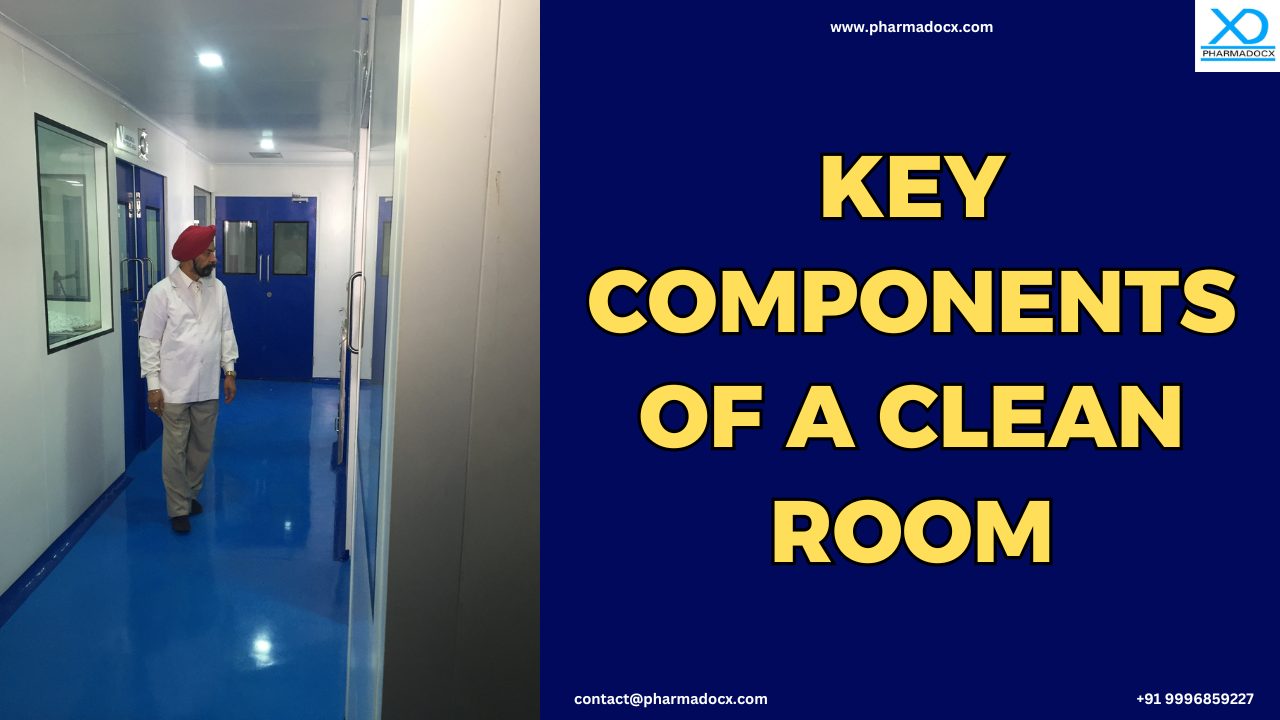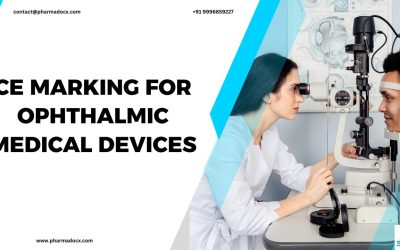Cleanrooms are specialized and controlled environments vital for the manufacturing and packaging of medical devices. They are designed to reduce airborne particles, microbes, and other contaminants that could compromise device quality, efficacy, and safety. This controlled environment is crucial, as contamination can lead to device malfunction, thereby harm the patient. Additionally, ISO 14644 guidelines have been formulated for clean rooms. These guidelines mention the amount of particulate matter permissible in this controlled environment. Moreover, they also mention tests that have to be carried out to validate the effectiveness of the rooms. Hence, designing clean rooms requires a certain level of expertise. In this blog, we have discussed the key components of a clean room and their functions.
We at Pharmadocx Consultants have extensive expertise in designing clean rooms. For regulatory compliance, the clean rooms have to be designed per industry guidelines and standards. As an experienced clean room design consultant, we have helped multiple facilities design and establish their clean rooms. Get in touch to have your clean room designed accurately as per latest regulatory requirements.
What is a clean room in the medical device industry?
Clean room is a sterile environment specially designed to minimize entry of aerosol particles and pollutants. It regulates pollutant level, humidity, and personnel access to prevent the entry of dust and germs. A clean room unit is mandatorily required in a medical device manufacturing facility. The rooms are specifically designed to maintain low environmental pollutant, such as aerosol particles, dust, airborne microbes, and chemical vapours, levels. Notably, these rooms provide a controlled and sterile environment for manufacturing and packaging of medical devices. Various components of a clean room are involved in maintaining the sterile and clean environment.
Materials and equipment entering the clean room have to be cleaned or sterilized. They are placed inside the clean room using controlled pass-through systems. Furthermore, regular cleaning of the rooms using validated disinfectants has to be done. Additionally, routine environmental monitoring, including particle counts and microbial sampling, has to be performed. These steps are vital for ensuring the medical devices are being manufactured under safe, hygienic, and regulatory-compliant clean room conditions.
9 Key components of a clean room
Clean rooms have to effectively maintain a clean and sterile environment. Thus, they have to be regularly tested for their effectiveness to maintain the permitted particle count limit. Clean rooms are made of several key components. We have highlighted the major components of a clean room.
1. Airtight enclosure
A cleanroom must be an airtight enclosure. Proper sealing prevents contaminated air from entering the clean room area. External pollutants are to be kept out to maintain a sterile environment.
2. Heating, Ventilation, and Air Conditioning (HVAC) system
The Heating, Ventilation, and Air Conditioning (HVAC) system regulates moisture, humidity, and temperature variations to maintain a stable environment within the clean room. Thus, it has a vital role in ensuring compliance with cleanroom specifications. The HVAC system controls the circulation of air within the cleanroom to maintain desired conditions.
3. HEPA filtration unit
An air filtration unit will be required to filter out particle pollutants. Cleanroom filtration units commonly used are ultra-low particulate air (ULPA) and high-efficiency particulate air (HEPA) filters. These filters efficiently capture airborne particles, thereby maintaining the required cleanliness level. ULPA filters can effectively eliminate at least 99.999% of dust, pollen, and other airborne particles as small as 100 nanometres. However, HEPA filters effectively remove 99.97% of the airborne particles up to a size of 0.3 microns. Furthermore, whether the particle count is within the cleanroom’s specified limit has to be regularly checked. HEPA filters basically maintain critical areas and protect sensitive products.
4. Airflow pattern measurement system
This system is crucial for validating the direction, velocity, and volumetric flow of air within the cleanroom to ensure effective contaminant removal. The direction of the airflow has to be per the clean room specifications and the medical device being manufactured. Airflow pattern is an important factor to consider while designing the clean room. Thus, an effective airflow pattern measurement system is a one of the key components of a clean room.
5. Pressurization measurement system
Room pressurization measurement system is required to ensure the specific room pressurization is being maintained. Clean rooms are usually required to maintain positive pressure, which prevents contamination of the air by the surrounding environment. It prevents unfiltered air from entering the room. Additionally, it ensures that air flows from the cleanroom into adjacent areas. Moreover, any leaks in the cleanroom can lead to undesirable particles entering the cleanroom. This will compromise its cleanliness and sterility. Thus, the desired clean room air pressure has to be constantly maintained. Hence, a pressurization measurement system has a crucial role in ensuring the cleanliness and sterility of the medical device clean room, thereby reduce contamination risks.
6. Control area (ante-room)
The control area is a dedicated area outside the cleanroom where personnel prepare for entry into the clean room. They following specific gowning protocols and hygiene practices.
7. Air purifiers
At the entry of these clean rooms, air curtains and air purifiers are placed. They blast filtered air over personnel entering the room to ensure they are free of external particles.
8. Airlocks
The integrity and sterility of the clean room is maintained using airlocks. Air locks are specialized units that act as transitional zones. They act as a buffer between different cleanliness zones. Airlocks prevent contaminants from infiltrating and contaminating the cleanroom. Hence, they are required to maintain consistently controlled and purified atmosphere. Thus, airlocks are also one of the critical components of a clean room.
9. Cleanroom walls and floors
Finally, clean rooms require special walls and floors. To meet ISO class cleanroom guidelines, the walls should be non-shedding. Additionally, the floors and walls must be smooth, impervious, and free from cracks and crevices. The floor can be made of either epoxy or heat welded vinyl. Heat welded vinyl floors are easy to clean, maintain, resistant to chemicals, and are anti slippery. However, epoxy flooring is cheaper. Nevertheless, epoxy flooring can be slippery.
How to operate a clean room?
Strict protocols are in place for operating a clean room. The components of a clean room should be maintained per these protocols. These guidelines are necessary to control contamination, maintain cleanliness, and ensure product integrity. Controlled access and gowning procedures have to be followed for entry into the clean room. Personnel should be trained with clean room operation protocols to minimize contamination risks. Moreover, air quality has to be maintained using HEPA filtration. Positive pressure has to be maintained to prevent particle ingress. Furthermore, environmental parameters, such as humidity, temperature, and particle counts, have to be continuously monitored. Additionally, equipment and materials entering the clean room have to be disinfected or sterilized as per standard guidelines.
Moreover, equipment should be properly calibrated and maintained as well as all processes should be properly documented. The clean room operation should be per ISO 14644 guidelines and should comply with all applicable regulatory requirements. Finally, the room has to be regularly cleaned using approved disinfectants.
Clean room provide a clean, regulated, and sterile environment. These conditions are vital for assembling and manufacturing high quality medical devices. In this blog, we have discussed the major components of a clean room as well as their role. Clean rooms are a mandatory requirement under most medical device regulatory guidelines. To have your clean room setup by industry experts, email at [email protected] or call/Whatsapp on 9996859227.





